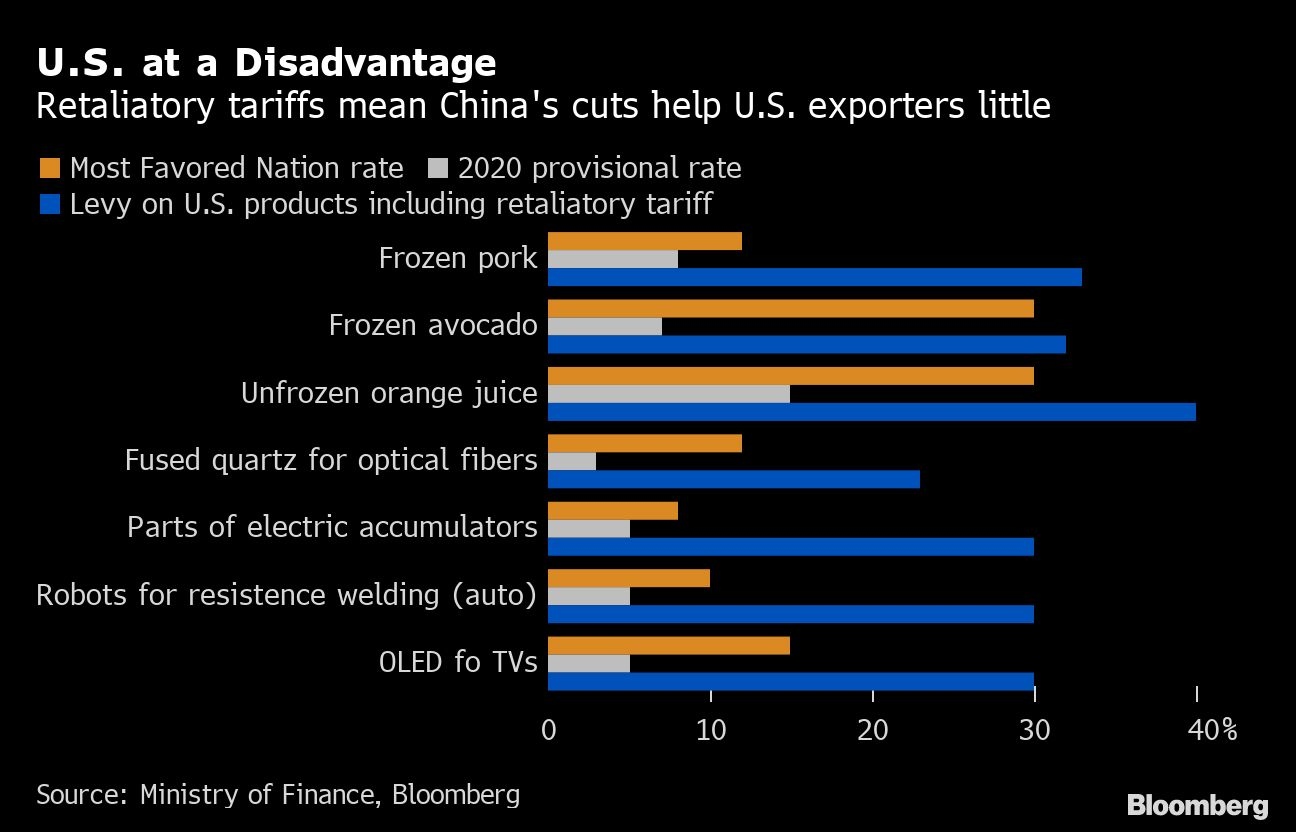Dec 23, 2019
China to cut tariffs on pork, tech from list worth US$389 billion
, Bloomberg News
China to Cut Some Tariffs From Jan. 1
China cut import tariffs on a wide range of goods including food, consumer items and parts for manufacturing smartphones, continuing Beijing’s drive to lower trade barriers and spur domestic demand.
The Ministry of Finance on Monday published a list of 859 types of products that will enjoy tariffs lower than the standard rates for this year. It included frozen pork as a key item aimed at alleviating shortages of the meat due to the outbreak of African swine fever.
In 2018 imports of the listed items totalled some US$389 billion, or about 18 per cent, of China’s total imports of US$2.14 trillion, according to Bloomberg calculations.
While the move isn’t directly related to the U.S.-China trade war, it supports the government’s claim to be further opening its economy as it pursues a deal with President Donald Trump’s administration. Economic growth is seen slowing next year to six per cent or below, and officials have an interest in lowering the cost of imported consumer goods.

“The move in lowering import tariffs reflects that the government wants to reaffirm its stance to the world on freer trade amid the trade war,” said Gary Ng, an economist at Natixis in Hong Kong. “Domestically, lowering import tariffs are helpful in reducing business and consumer costs.”
Since 2017, China has been cutting import tariffs on consumer goods including wine, baby products, whiskey and seafood, items that remain on the expanded list for 2020. Drugs for treating asthma and diabetes were added to the list. Smart-phone camera sensors, glass used in liquid crystal displays and organic light-emitting diode (OLED) screens found in high-end TVs and smart-phones, and semiconductor testing and sorting equipment are also included.
Separately, at the weekend the government released further measures to shore up the private sector, including opening previously closed industries to non-state investors.
Open Economy
The list allows lower tariffs on goods coming from World Trade Organization members. For countries with which China has free-trade agreements, duties can be lower still. They include New Zealand, Peru, Costa Rica, Switzerland, Iceland, Singapore, Australia, South Korea, Georgia, Chile and Pakistan, according to the statement.
The tariff reduction measures “facilitate the open economy to a new level,” according to the ministry statement.
China’s import growth has stalled this year amid the broader slowdown in the economy, helping to widen the trade surplus. As part of the phase one trade deal agreed with the U.S. this month, the nation has committed to ramping up purchases from there by as much as US$200 billion over the next two years.
--With assistance from Edwin Chan.
